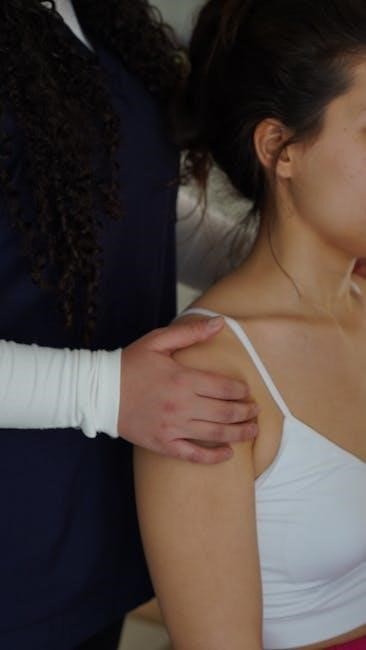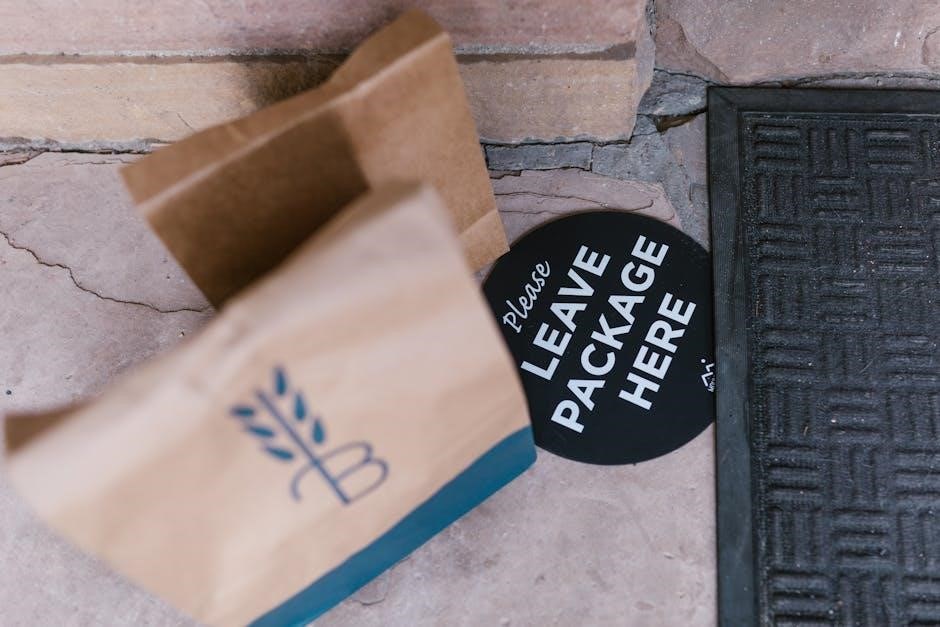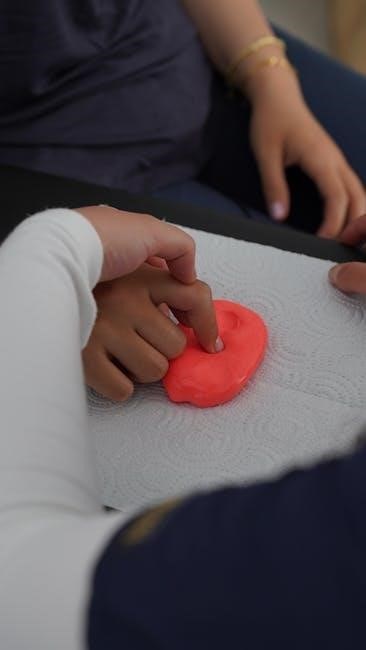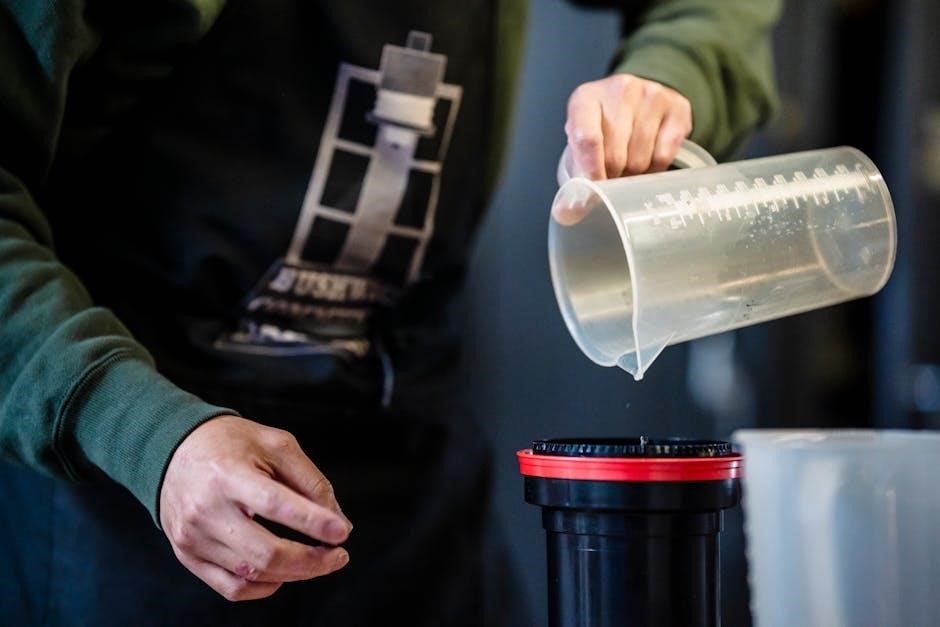
Rainbow Loom Instructions: A Step-by-Step Guide
On this page‚ you’ll discover Rainbow Loom instructions for creating everything from the simplest bracelets to the most advanced designs. Whether you’re a beginner or an experienced loomer‚ find tutorials and printable patterns to guide you in crafting amazing bracelets and charms.

The Rainbow Loom is an innovative crafting tool that allows you to create intricate rubber band bracelets‚ charms‚ and more. Awarded “Toy of the Year” in 2014‚ it has become a popular educational craft for both kids and adults. With the Rainbow Loom‚ you can explore your creativity and design unique accessories. This guide will walk you through the basics‚ from setting up your loom to mastering advanced patterns.
Whether you’re new to the Rainbow Loom or looking to expand your skills‚ this step-by-step guide offers clear instructions and helpful tips. You’ll learn how to make a basic bracelet and gradually progress to more complex designs like starburst bracelets and fun little charms. The instructions can be found online‚ in dedicated craft books‚ or in printable PDFs. Simplicity is key‚ as the initial instructions are often designed to be easy to follow‚ ensuring a smooth start to your Rainbow Loom journey.

Discover printable Rainbow Loom patterns and video tutorials to enhance your learning experience. Explore different techniques and create personalized accessories that reflect your unique style. Get ready to unleash your creativity and dive into the colorful world of Rainbow Loom!
Basic Rainbow Loom Bracelet Instructions
Let’s begin with the fundamentals of creating a basic Rainbow Loom bracelet. This simple project is perfect for beginners and will help you understand the core techniques involved in loom crafting. Before you start‚ gather your Rainbow Loom‚ a hook‚ rubber bands‚ and a clip. Ensure your loom is set up correctly with the pegs aligned.

First‚ place your initial rubber band in a figure-eight shape around two pegs on the edge closest to you. This ensures that the end of the bracelet is nice and secure. Then‚ continue placing rubber bands over the pegs‚ one band per peg‚ moving forward in a consistent pattern. Once you’ve placed enough bands to reach your desired bracelet length‚ it’s time to start looping. Use your hook to pull the bottom band over the top band on each peg. Repeat this process down the length of the loom.
After looping‚ create a slip knot to secure the end. Carefully remove the bracelet from the loom‚ and attach a clip to both ends to hold it together. With these basic steps‚ you can create a simple yet stylish Rainbow Loom bracelet.
Materials Needed for Rainbow Loom Projects
To embark on your Rainbow Loom crafting journey‚ it’s essential to gather the necessary materials. The most fundamental of these are the rubber bands. These come in a vast array of colors‚ finishes‚ and even patterns‚ allowing for endless creative possibilities. Ensure you have a good selection to bring your designs to life.
Next‚ you’ll need a Rainbow Loom. This is the base upon which you’ll construct your bracelets and other creations. There are different types of looms available‚ so choose one that suits your project needs. A hook is another indispensable tool. It helps you manipulate the rubber bands‚ loop them over the pegs‚ and create intricate patterns. Look for a sturdy hook that’s comfortable to hold.

Lastly‚ don’t forget the clips. These small but crucial fasteners hold the ends of your bracelet together‚ creating a secure and wearable piece. S-clips and C-clips are the most common types. With these materials in hand‚ you’re well-equipped to start creating a wide range of Rainbow Loom projects.
Setting Up the Rainbow Loom
Before diving into your first Rainbow Loom project‚ it’s crucial to set up your loom correctly. Most looms have rows of pegs‚ and you’ll need to arrange them in the appropriate configuration for your chosen pattern. For a basic bracelet‚ the pegs should typically be aligned in a staggered pattern‚ with the center row slightly offset from the two outer rows.
Pay close attention to the arrows on your loom. These indicate the direction in which you should place the rubber bands. Usually‚ the arrows should be pointing away from you. If you’re using a loom with adjustable rows‚ make sure they are securely locked in place to prevent any accidental shifting during the looming process.
Ensure that your workspace is well-lit and that you have enough room to maneuver the loom and your hands comfortably. A stable surface is also essential to keep the loom from sliding around. Taking the time to set up your loom properly will make the entire crafting experience smoother and more enjoyable.
Step 1: Placing the First Rubber Band
The first step in creating a Rainbow Loom bracelet is placing the initial rubber band. This band forms the foundation of your design‚ so precision is key. Start by taking a single rubber band and stretching it between two pegs on your loom. For a standard single bracelet‚ place the band in a figure-eight shape around the first two pegs closest to you. This secures the end of the bracelet.
Ensure the band is lying flat against the pegs‚ without any twists or kinks. The tightness of the band is important; it should be snug but not overly stretched. An overtight band can cause it to break during the looming process. If you’re using a loom with a center row‚ the band should typically span from a peg on the center row to a peg on one of the outer rows.

Double-check the placement to ensure it’s correct before moving on. A solid foundation is essential for a successful Rainbow Loom project. Once you’re satisfied‚ you’re ready to add more bands and continue building your bracelet.
Step 2: Looping the Rubber Bands
After placing the initial rubber band‚ the next step involves looping additional bands onto the loom to create the body of your bracelet. Start by placing more rubber bands on the pegs. For a simple bracelet‚ place one band on top of the other‚ stretching each band between the same two pegs used for the first band. Ensure that the bands are neatly stacked on top of each other.
The number of bands you add at this stage depends on the desired thickness of the bracelet. Generally‚ two to three bands are sufficient for a basic design. Once the bands are in place‚ it’s time to start looping. Use a hook tool to grab the bottom band on the peg. Gently pull it over the top of the peg‚ releasing it on the other side.
Repeat this process for each peg‚ always looping the bottom band over the top. This creates the interlocking pattern that forms the bracelet. Be careful not to pull too hard‚ as this can cause the rubber bands to snap. Ensure each loop is secure before moving on to the next peg. This looping process is fundamental to creating the bracelet’s structure.
Step 3: Hooking the Bands
After looping the rubber bands‚ the next critical step is hooking them together. Using your hook‚ gently reach under the first band on the loom peg. Grab the band underneath it and carefully pull it over the top of the peg. This action creates the initial connection in your bracelet pattern. Ensure the band is securely over the peg before proceeding.
Repeat this process for each peg along the loom. Always reach under the existing band to grab the next one‚ pulling it over the top. This interlocking technique forms the basic structure of your Rainbow Loom creation. Take your time and avoid pulling too hard‚ as this can cause the rubber bands to break. A smooth‚ consistent motion will help maintain the integrity of your design.
As you hook the bands‚ you’ll start to see the pattern emerge. Double-check each peg to make sure the correct bands are being pulled over. This attention to detail ensures a neat‚ uniform appearance in your final product. Hooking the bands properly is essential for a durable and visually appealing bracelet.
Step 4: Creating a Slip Knot

Once you’ve hooked all the bands on the loom‚ it’s time to create a slip knot. This knot secures the end of your bracelet‚ preventing it from unraveling. Carefully transfer all the loops from the last peg onto your hook. With the loops now on the hook‚ take one of the loops and pull it over the other loops‚ effectively creating a knot.
Ensure the knot is snug but not too tight. A tight knot can stress the rubber bands and potentially cause them to break. Gently adjust the knot to achieve the desired tension. The slip knot acts as a secure anchor‚ holding the entire bracelet together. It’s a crucial step in completing your Rainbow Loom project.

After creating the slip knot‚ double-check that all loops are securely fastened. This final check ensures that the bracelet won’t come apart during wear. The slip knot provides a professional finish‚ giving your creation a polished and durable quality.
Step 5: Removing the Bracelet from the Loom
With the slip knot secured‚ the next step is carefully removing the bracelet from the loom. This process requires patience to avoid breaking any bands. Start by gently lifting the looped bands from each peg‚ one at a time. Use your hook or fingers to ease the bands off‚ ensuring they don’t snap or stretch excessively.
Work your way down the loom‚ systematically removing each loop. Avoid pulling too hard or yanking the bracelet off in one swift motion‚ as this can damage the structure. If a band seems stuck‚ use the hook to gently loosen it before proceeding. Take your time and be mindful of each connection.
Once all the loops are free from the pegs‚ the bracelet will hang loosely. Inspect the bracelet for any imperfections or loose bands. This is your opportunity to make any necessary adjustments before securing the bracelet with a clip. Removing the bracelet carefully ensures a smooth and professional finish.

Securing the Bracelet with a Clip
After carefully removing the bracelet from the loom‚ securing it with a clip is the final step in completing your Rainbow Loom creation. The clip‚ typically a C-clip or S-clip‚ holds the two ends of the bracelet together‚ forming a closed loop. To attach the clip‚ stretch the open loops at both ends of the bracelet.
Take one end of the clip and hook it onto the stretched loops on one end of the bracelet. Make sure the clip is securely attached to all the loops to prevent them from slipping off. Repeat the process on the other end of the bracelet‚ attaching the other side of the clip to the remaining loops.
Once both ends are connected‚ double-check that the clip is firmly in place and that all loops are securely fastened. Give the bracelet a gentle tug to ensure the clip won’t come undone during wear. Securing the bracelet properly ensures it stays intact and can be enjoyed for a long time.
Advanced Rainbow Loom Patterns
Once you’ve mastered the basic Rainbow Loom bracelet‚ it’s time to explore the world of advanced patterns. These intricate designs require more skill and patience‚ but the results are well worth the effort. Advanced patterns often involve using multiple looms‚ incorporating different techniques‚ and combining various colors to create stunning‚ complex bracelets and charms. Some popular advanced patterns include the triple single bracelet‚ starburst bracelet‚ and fishtail variations.
To tackle these patterns‚ it’s helpful to find detailed tutorials‚ either online or in printable PDFs. These resources provide step-by-step instructions‚ visual aids‚ and tips to guide you through the process. Don’t be afraid to experiment with different color combinations and modifications to personalize your creations. With practice and dedication‚ you’ll be able to create impressive Rainbow Loom designs that showcase your creativity and skill.
Triple Single Bracelet Tutorial
The Triple Single Rainbow Loom bracelet is a fantastic step up from the basic single bracelet. This design features three rows of rubber bands running parallel to each other‚ creating a thicker‚ more intricate look. To begin‚ you’ll need your Rainbow Loom‚ a hook‚ a clip‚ and plenty of rubber bands in your desired colors.
Start by placing the first row of bands‚ then the second‚ and finally the third. Ensure each band is properly looped around the pegs. The hooking process involves carefully pulling the bottom bands over the top‚ creating the signature woven pattern. This process requires patience and precision. As you progress‚ the Triple Single pattern will begin to take shape.
Online tutorials and printable guides can be invaluable for visualizing each step. Remember to secure the bracelet with a clip at the end. The Triple Single bracelet is a rewarding project that adds depth to your Rainbow Loom skills.
Starburst Bracelet Tutorial
The Starburst bracelet is a dazzling Rainbow Loom creation that resembles a burst of colorful stars. This pattern involves arranging rubber bands around a central peg‚ creating a star-like design that repeats along the bracelet’s length. To begin‚ gather your Rainbow Loom‚ hook‚ clip‚ and a variety of rubber band colors.
Start by placing a central color band in the middle of the loom. Then‚ arrange the surrounding bands to create the star shape. The hooking process is intricate‚ requiring careful attention to detail. Each starburst unit is created individually and then linked together to form the bracelet. Online video tutorials and printable PDF instructions can be incredibly helpful for visualizing each step.
The Starburst bracelet is a more advanced project‚ but the stunning results are well worth the effort. Secure the bracelet with a clip at the end. This design allows for endless color combinations and customization‚ making each bracelet unique.
Finding Printable Rainbow Loom Patterns
Discovering printable Rainbow Loom patterns is essential for crafters seeking structured guidance. The internet offers a wealth of resources‚ including websites dedicated to Rainbow Loom designs‚ craft blogs‚ and online communities. Many of these platforms provide step-by-step instructions accompanied by visual diagrams or photos‚ which can be downloaded and printed for convenient crafting.
Dedicated craft books are also a valuable source‚ often containing a variety of patterns ranging from beginner-friendly to advanced. Additionally‚ platforms like Pinterest and Etsy host numerous printable patterns created by independent designers. When searching online‚ use specific keywords such as “Rainbow Loom patterns PDF” or “printable Rainbow Loom instructions” to narrow down your results.
Ensure the patterns you find are clear‚ concise‚ and suitable for your skill level. Printable templates allow for easy reference and minimize the need to constantly refer to a screen‚ making the crafting process more enjoyable and efficient. These patterns can help create bracelets and charms.

Rainbow Loom Tutorials: Videos and PDFs
Rainbow Loom tutorials are readily available in both video and PDF formats‚ catering to different learning preferences. Video tutorials‚ often found on platforms like YouTube‚ provide visual demonstrations of each step‚ allowing crafters to follow along in real-time. These videos can be particularly helpful for complex patterns or techniques that are difficult to grasp from written instructions alone.
PDF tutorials‚ on the other hand‚ offer a more structured and printable format. They typically include detailed step-by-step instructions‚ diagrams‚ and photos‚ making them ideal for crafters who prefer a tangible guide. Many websites and online communities offer free or paid PDF patterns for a wide range of Rainbow Loom projects‚ from basic bracelets to intricate charms and figures.
When selecting tutorials‚ consider your skill level and the complexity of the pattern. Beginner tutorials often focus on basic weaves and techniques‚ while more advanced tutorials explore intricate designs and color combinations. Combining both video and PDF resources can provide a comprehensive learning experience‚ allowing you to master the art of Rainbow Loom crafting with confidence and creativity.




